If you have never tried to build anything in Minecraft you may not realise the effort that goes into these. They are incredibly clever, and also a fantastic repurposing of the platform. Second Life/opensim builders and scriptures take note too.
A machine that is a programmable guitar. Purely made of switches and blocks powered by redstone (aka electricity). A mechanical marvel.
The Simpsons intro redone as a machinima. Like many of the Lego parody movies the adjusting of the style of environment makes this even better
Just to add to the meta nature of mirror worlds there seem to be a lot of recreations of the world of Skyrim in Minecraft too.
There are also lots of very interesting time lapses of massive builds. This one of ancient Egypt is a great exemplar
FyreUK appear to be amongst the best builders in the world too with this recently too.
Stunning.
Still Minecraft is just a game about digging stuff up isn’t it 😉
Nope its a full on metaverse with live user creation tools and digital distribution of content.
metaverse
Kickstarting the virtual world – busking for change
There is a very large community of people out there who are looking at various virtual world projects. Many of these people were part of the 2006/2007 (and before) Second Life explosion that I feel a particular affinity too. If it was not for all that I would not be doing what I do now in quite the same way.
So I take a keen interest in any interesting projects in the space. So it is interesting when people ask if Second Life is dead, meaning are virtual worlds dead on the basis that they don’t hear wild and wacky stories about them in the press quite so much as its all Facebook and Twitter.
However, the industry is gathering itself and the movers and shakers, new and old are creating interesting things.
One such project is a new mirror world project. This one is from Jon Brouchard of ArchVirtual He has been around a while and is a name many will recognise from his architectural approach to virtual environments. I noticed on the Kickstarter a project by him called Main Street MMO cities in Realtime 3D and so I backed it.
Mirror worlds, replications of real places, have a specific set of challenges in gathering and recreating the physical world, however it was not that problem space that interested me. It was that this one is to be built in Unity3d and hence has the chance of being a very accessible platform.
With such a keen interest in Kickstarter at the moment it seems wrong to not invest in a virtual world project on a platform I have a lot of time for by someone whose work we know is of great quality?
In many ways Kickstarter is an entrepreneurial busking on the street corner, getting small change for your talents but hoping to get enough to make something bigger happen. The fact this project is actually making street corners has a wonderful symmetry to it.
Another virtuous loop in 3d printing/metaverses
It is a few years back now that we started to see applications that would print our digital 3d designs form Second Life out into physical form. Now the current king of user generated content in a 3d multi user virtual world toolkit/game (metaverse) – Minecraft, is getting the same treatment.
Eric Haines has created an open source package to help go from the digital blocks of Minecraft to a file format suitable for 3d printing.
Whilst there is a pursuit of mesh reality in Second Life, smooth curves flowing lines Minecraft’s charm is that everything looks blocky, but you can still be creative in the use of those blocks and colours. (i.e. there is a prim and its a cube (there are a few extra shapes 🙂 ). It is so far way from the uncanny valley, yet it is actually full of valleys in its digital representations.
What I think is great is that its the same cycle as in 2006, in 2011/12 but with even more buy in at the game level, and lots of education uses. Plus this time around we have services like Shapeways to print with.
More please 🙂
Pandamonium at Cool HQ – Live Mocap
We have another technically adventurous Cool Stuff Collective this week. Of all the ones we have done it is the one that made me laugh the most. Plus it is highly related to virtual worlds and avatars.
We got Vicky into a sensor laden motion capture suit. The suit using gyroscopic sensors to get positional information and limb rotation.
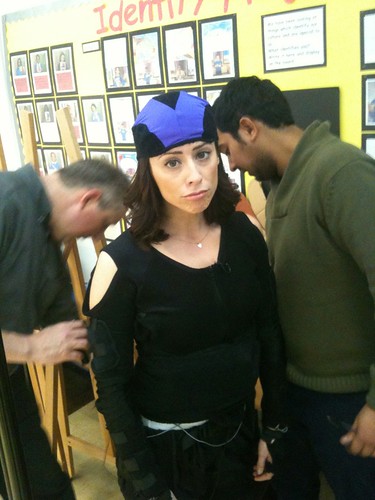
Vicky Letch gets suited up.
That is then used live to allow an avatar to be controlled (though it can be used to record BVH files for things like Second Life and other games)
In this case we turned Vicky into a very cute Panda.
All the kit and support came from the Brighton based Animazoo. Mark from Animazoo was thrown into the spotlight as the visiting expert too and did a great job.
We changed the flow as this was about Vicky performing in the suit so I took the reigns as interviewer with Mark and also got to talk to Vicky’s virtual panda persona.
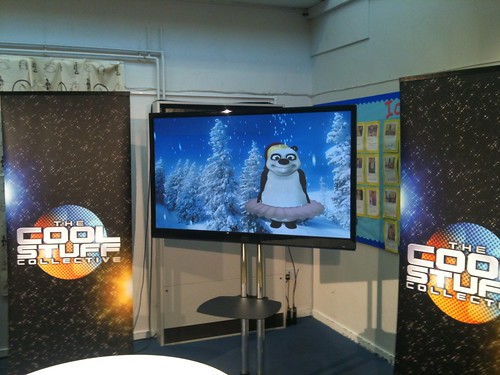
Many people faced with a mocap suit and an on screen digital figure just wave their arms around a bit, Vicky threw herself into character and became one with the Panda, which is what made this item even cooler.
As well as body movements a separate hand controller is used for facial expressions and the Vicky the panda became even more real.
The bit that really made me chuckle was the reversal of the silly question at the end. Usually I have to strop off in indignation saying I am a tech geek not a … whatever. As we had a digital panda there it was its turn to rant and turn and leave in a huff. Brilliant puppetry and voice combination meant this worked really well.
Those of us that live and work in virtual worlds have started to get used to expression through a digital avatar. As we know though, it is that proxy for our human actions that seems to scare many people, fearing being misunderstood or lacking in trust of the other avatars as people might be “hiding” something. It is the core of all the fuss about #nymwars too as we express ourselves digitally. (I had a go here using Kinect a while back) whilst trying to explain digital persona is not a binary thing.
In this show it was Vicky, we knew that, but equally she was acting and merging some comedy panda with her own persona. It is something everyone should try, some puppetry or digital interaction with a facade that is not just their face. It tells you a lot about that persona and about yourself.
Anyway the show is on the ITV Player for a few weeks. Two more shows to go and the next one is next Saturday but at the slightly earlier time of 7:50 (so the CITV tweets said anyway)
Minecraft Machinima
There are some great examples of creative use of cover versions of popular music combined with machinima created in Minecraft appearing on youtube. This one is really good IMHO 🙂
If you don’t get what Minecraft is and can do then watch this, and then some of the linked videos too. It is a new generation of filmaker/gamers exploring the creative world online in a metaverse.
The future of Virtual Worlds in your hands : vPEARL summit
Septmber 2011 sees an even in L.A. It is sponsored by the IEEE but it is not about the usual technical interchange standard.  Instead it is about getting people from diverse fields and setting then some social challenges in a rich creative settings and seeing who comes up with what to harness both existing Virtual Environments and spotting the gaps missing for the future.
Instead it is about getting people from diverse fields and setting then some social challenges in a rich creative settings and seeing who comes up with what to harness both existing Virtual Environments and spotting the gaps missing for the future.
The event is titled vPEARL (Virtual Play Exchange Advise Renew Learn), it’s going to be on 20-21 September 2011, Los Angeles, California. In the US of A. Registration is $150 and spaces are limited to 100.
The official event page and registration is here: http://standards.ieee.org/news/vpearl/index.html
There is an upcoming page too here
Just so you know the context of this a large number of people from around the virtual world business, academia, film, the arts and many others have come together already to start this movement. As an example you can see Ren Reynolds post on the same event over at Terra Nova. You can also see some of the names of people gathering together to make this happen (as we all have good intentions to push the metaverse to its next level) here on the VeColab.org site.
“vPEARL Highlights
Keynote and Catalyst presentations
A set of real-world challenges developed by the VECoLab, a community of virtual world experts sponsored by IEEE and supported by e426.org
Summit focus on “Breakouts for Solution” teams with onsite and virtual participants facilitated by the VECoLab
A variety of virtual world platforms from sponsoring vendors for use by participants
A planned one-hour virtual world link to another conference in the UK to share key findings
Awards for the best solutions developed by the teams, based on creativity and applicability”
The UK conference will be a live link to ReLive 2011 I will be at that conference ready to do my Terry Wogan bit and say “Hello Los Angeles”.
Pass it on, check it out, lets make things happen.
Metameets – The last post : 4 of 4 (plus 1)
Finally I get to talk about the last parts of the Metameets conference gathering last month. It is rare that posts take this long as I prefer to fire a quick post up and not leave things lingering, however it was so packed that that just was not going to happen to do it justice.

First it was great to see Toxic Menges tell us all about the now famous Meroos. These virtual life critters are a Second Life phenomenon. They are not simple scripted in world creatures. Their evolution and life cycle is controlled on servers outside of Second Life. They are registered purchased goods expressed and interacted with in Second Life. I did buy a Meroo after the presentation, but it has run away as I forgot to feed it. A-Life is always fascinating and when combined with a virtual world and a value economy even more so. Meero’s evolution and breeding cycle, specializations and changes are all out there to be discovered and lots of people are farming them for profit, or caring for them as pets.
This is really advanced a-life in how it works within the scope of a shared environment. Toxic pointed out how the Meeroo’s come up and give your avatar a hug in world. This is not a standalone tamagotchi.
Next up was a remote pitch by film maker Bernhard Drax/Draxtor Despres on The making of SL/WoW documentary Login2Life. This was part in world (we all rezzed with him in virtual Amsterdam) and then heard all about this new reportage covering all elements of the SL and WoW experience. It is running on German TV very soon and hopefully will be available world wide as we all know Draxtor does great work.
We have Melanie Thielker back to do a second presentation specifically on Roleplay in Virtual Worlds. Melanie enthused about the potential of role play in virtual worlds, how characters form and play and act. It is a very specific form of entertainment that can be a little scary for people used to being handed their experiences. In some ways it is like the difference between a radio and choosing your own songs. Both work, both co-exist and virtual worlds provide an ideal way to explore what role play is.
Toni Alatalo got a chance to show off RealXtend and the subtle differences and extensions that this platform has over SL and Opensim. One of the key elements of the model this works on is that everything is a world object. There is no specific need to have an avatar or an island. (So much nodding and whooping from me). Toni also gave his presentation with the virtual world, mixing and zooming around screens and examples of eagles swooping and catching fish.
Timo Mank came to talk TMSPTV a meditative space and a playground for co-creation across realities. This was an intriguing project that turns the island idea on its head. This was a creative collective that represents its stories and ideas in Second Life in order to reach a wider audience yet is drawn from a physical location which is itself a communal physical island. It has a culture of storytelling and each day the stories are retold as part of a daily routine. That culture is capture and placed in world.
Karen Wheatley talked about The Evolution of Virtual Theatre. This was a fascinating insight from a theatrical production point of view. Karen stages live plays in Second Life but adapted for Gorean culture. The Jewell Theatre has been staging full-length original plays in Second Life since August 2007, so there is a lot of experience on hand. In staging plays Karen has to consider the fact that the audience actually may be sat in one place but can move the camera anywhere. There are no cheap seats in SL. Set changes can happen very much quicker too, with objects rezzed and moved as needed. Most of the plays have been text based due to unreliability of voice sometimes. Chat was adjusted with the equivalent of a text microphone that relays the chat labelled as the character name not the avatar name. Yes thats right a person with an avatar playing a character lots of levels of redirection there. Actors also have to be aware that they need to explicitly puppet their avatars with a directors missive “T*ts to the action people”. Having had to deal with the challenges of locations and tv studios I appreciated the challenges of staging in SL in this more directed way. As Karen said you use what you have got and the challenges of a platform or place become part of the production.
Steve Zapytowski continued the theatrical strand with Blended Performance: Live Actors and a Virtual Player. Steve is professor of Design and Technology, Kent State University. Founding member of the Institute for Learning in Virtual Environments (iLIVE). He presented from in SL and we watched some local videos of his work. This was about a physical production of Hamlet but the ghost was a stage effect that was pre-render animation of a human figure. They had to mix the pre-renders with suitable lighting and cueing to make the ghost move, appear, puff away etc. It look very powerful and very interesting. There was lots of discussion about live puppetry versus the pre-canning but again thats a choice of the environment and how to work. Each has its flavour and challenges.
Finally up was Chantal Harvey / Mamachinima that strangely I already blogged, it was where I started this thread of metameets.
http://www.feedingedge.co.uk/blog/2011/06/21/metameets-2011-part-1-of-n/
http://www.feedingedge.co.uk/blog/2011/06/23/metameets-lazy-teachers-and-revolving-doors-part-2-of-n/
http://www.feedingedge.co.uk/blog/2011/06/28/metameets-part-3-of-n-grid-wars-and-envelope-pushing/
So that was Metameets. An amazing collection of ideas, people and passion. I throughly enjoyed both being the MC and hearing everything and meeting everyone. The Club Karlsson venue was very cool too and everyone was very helpful . What a blast ! Well done all. In particular joja dhara for bringing us all together in the first place (though she asked me not to thank her at the time so I have messed that one up 🙂 )
All the pieces are falling in place – Unity3d
Back in late 2009 I wrote a post saying we had all the pieces to start seriously building virtual world toolkits and environments from off the shelf pieces.
Today I have seen two releases arrive of new hosted toolkits and services, both using Unity3d and some of the other pieces related to hosting a server component. They are both from stalwarts of the virtual worlds industry and both with former close ties to Linden Lab and Second Life.
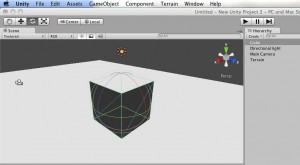
In not particular order the first is from SecondPlaces.net called Unifier. As with all Unity environment this benefits from the browser plugin to let it run on most browsers. According to the site its using smartfoxserver to broker the positions of the other avatars and flash voice for VOIP.
The key is that it acts both as a hosted service on Amazon EC2 (i.e. thats where the server will be running for your instance) or as a run yourself service. Smartfoxserver is a relatively simple java application to get going on a server with some config for ports etc needed. The important parts are it knowing what it needs to keep a track of an what clients subscribe too. There also appear to be lots of interaction with other content, whiteboards etc and the sort of dynamic tools needed to interact online. So a lot of work has gone into productising this.
The second offering is from Tipodean which is both a service to run peer to peer unity3d (which looks like it uses the unity3d master server) and an OpenSim to unity3d conversion service. So you can pay to get your build moved from prims to the mesh of unity3d and then have some unity3d polish applied to it.
It is not clear how dynamic any of the environments are, as typically, whilst unity3d can load new assests on the fly it is more complicated to set that up than the ability for people to walk around a fixed environment.
The upshot of all this is that there is more choice and scope for the market to grow. These join the other services out there and form part of an SL counter culture, in a slightly different way to the counter culture of Opensim.
It’s all good.
Very cool controller – Blobo
At Metameets Toni Alatalo of Playsign (and RealXtend) showed me this gadget he had. I was instantly intrigued and thought it was brilliant. Its a bluetooth based controller that knows its own rotation, directional travel and also if its being squeezed. It Is called a Blobo.
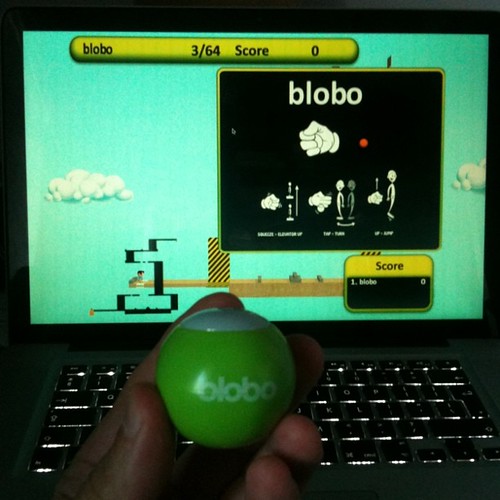
It also has some interesting features where by your avatar and some other information is stored in the ball so you can move it to other blobo owners games and play with them.
I shall certainly be carrying mine around to a few venues and presentations to show people that the world is not all joypad 🙂
Metameets part 3 of n : Grid wars and envelope pushing
Metameets might seem a long while ago at web speed but the themes and trends emerging are still relevant. So I make not apology for this being a long run series of posts 🙂
On day 1 we got to another section about the grid and kicking this off was a discussion about Second Life third party viewers or TPV’s as they are called. This is a fascinating case study in both competition and symbiosis with a load of niche and specialised interests thrown in for good measure.
Kirstenlee Cinquetti/Lee Quick is the driving force behind the very popular TPV Kirstens Viewer Lee has a great passion for the Second Life environment and also is very interested in photography and film making.
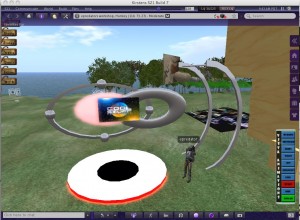
So the aim of his viewer project was to take the Open Sourced Snowglobe code from Linden Lab and enhance it and improve it to make a very focused viewer that presents a great visual experience, as good as it possibly can be. He makes no apology for the spec of machine needed and this is where the cooperation with SL comes in. He is able to provide a focus and a niche built on top of the standard open source code to enhance some users experiences. However he is, and has to be, so on top of the releases of the code and changes to the grid (servers) that he finds things out before they go really public. When a function appears, hidden away, he and his team will find it, test it and patch their viewer to use it, or work around it if it doesn’t work properly. In many ways he is quality assurance for SL, whilst being completely independent. He said the Lab hates him 🙂 but i am sure they love him in equal measure too. It is difficulty for many commercial companies in andy industry to understand this user/developer/prosumer model. Kirstenlee is pushing the envelope with access to features that are intriguing (like stereoscopic 3d). He is restructuring major parts of code to treat the user interface in a much more engineered way to allow for cleaner layout and transparent parts of the interface. He is now looking at better camera controls, fixed views, dollys etc for the machinima makers to use. All of this is good for SL (and also the related platforms like opensim potentially). The Lab benefits from this focus, but I can imagine that it can also be difficult as when developing an releasing products time and priorities are different for different people.
Next up and on the a slightly different co-op confrontational path was Melanie Thielker. She is another (of the very rare) core opensim developer and has done a lot of the restructuring work. Here though Melanie was talking about her hosted business based on Opensim Avination This venture is a growing business, with a focus on roleplay. It is very impressive to be able to both spark up and push forward a customer facing grid whilst also living in the open source development world. However that gives Melanie a great perspective on what needs to be done and real life systems architecture to keep her grids running and growing. This grid is of course in direct competition with the Second Life one, but exists because of the spin off of Opensim and the open source approach to development in taking something closed and making it better.
Next we had a bit more of a standard product pitch, though it is still a leading edge idea. Fred van Rijswijk from C2K dashed in to share some of the interesting things being done with Layar. Layar is a “traditional” augmented reality application. The client allows the merging of real and virtual content based on location of the client. I say traditional as I think AR is about anything from anywhere merged with anything from anywhere else in more than one way. We do have to evolve to that though. Rather like the early web AR generally requires someone to make things for you. Design and game agencies can craft the 3d models and register them in layers to be viewed. It is interesting to consider all the content creation in various virtual worlds done by general users and how that might be liberated by AR applications? Augmenting one AR with another etc. I do like many of the Layar examples and the increasing move to go from flat HUD styles to more interactive 3d objects in space is an interesting direction.
Finally for the day Tim Goree of Nokia and a rather well known metaversanlity riffed on some ideas without the aid of a power point (yay). Tim knows his stuff and I am happy he has managed to stick with it in a large corporate environment and keep pushing. Tim was musing on the avatar, not just as a single mesh used to represent you in a virtual world, but as an identity construct that flows across all digital media. He talked about some of Microsoft’s work in ultra realistic avatars (which help with the concept of visual identity) but he also talked about the underlying need to choose how and what to share with who and own your own identity.
I am borrowing Tim’s quote from Roland over at Mixed Realties (as I took no notes 🙂 )
“Count up all the virtual worlds user hours, gaming user hours, chances are all this is more important than the web”, so Tim continued. “Avatars have been used to validate transactions for hundreds of years – think stamps, coins for example. These days there are billions of (virtual) avatars out there, why not use them to change society?”
It was then left for me to wrap up, as Tim had said some cool forward thinking things I just mentioned the IEEE Virtual Environment Colab and its event coming up as validation that many people are gathering again to push the industry to the next step and not just considering moving data from a to point b (though we still need to do that). I also pointed to the Btween3d conference in London sponsored by Sony that is bringing thought leaders from lots of industries to consider the whole of the domain.
So with consensus driving bodies such as the IEEE looking for the patterns and exemplars in the virtual world and related technology domain, and a major gathering in London on the subject it was good that the pioneers in the room at Metameets were still very much on the leading edge, pushing things forward whilst the world catches up with them 🙂
Next Day 2 (which is more art than science and a shows the breadth of what goes on out here/there)
